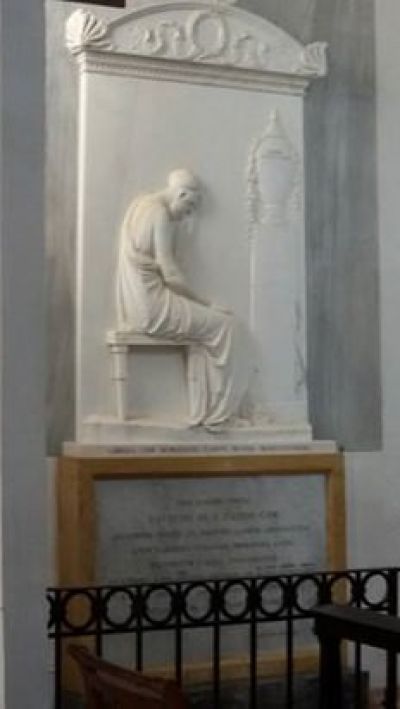One of the preeminent schools and research centers in the world for the education of the blind is the Tactile Painting Museum of Ancient and Modern Art (Museo Anteros) affiliated with the Cavazza Institute for the Blind in Bologna. The Museo Anteros (as it is often called) is the first museum devoted to the translation of two-dimensional paintings into relief sculptures that can be used as part of a didactic and tactile learning experience for blind and visually impaired students and visitors to the museum.
Some years ago, I was invited to spend time at the museum to learn firsthand about its teaching methods. The museum employs hand-sculpted, three-dimensional plaster reliefs of well-known paintings to use as tactile learning tools. The staff at the museum and at the Cavazza Institute are preeminent figures in the field of visual education for the blind led by the director of the museum, the art historian Dr. Loretta Secchi. The plaster reliefs are created at the School of Applied Sculpture in Bologna, an academy that preserves and teaches traditional methods of sculpture.
The processes, procedures, strategies, and methods developed by Dr. Secchi and her colleagues are among the most innovative, closely studied, and well-respected in the world combining an understanding of visual perception and cognition with the study of art history and the long tradition of Italian relief sculpture. In three intense days of activity, I was able to work directly with Dr. Secchi and three of her assistants (two of whom were blind) as I learned about the history of the museum, its mission and goals, and its curriculum and teaching methods. I was given personal training in how to use the relief sculptures as part of a learning experience along with related Braille texts and additional visual, tactile, and audio aids. The goal was to convey a visual experience through tactile perception.
Working with one of the trained staff members, the session begins by reading about and discussing the work of art chosen to explore. The student learns something of the background of the artist and the historical context of the painting. Aspects of its subject matter and meaning may be addressed. Once this initial verbal orientation is completed, it is time to experience the formal aspects of the painting through a tactile (hands on) exploration of its surface. This entails moving one’s hands slowly across the surface of the relief guided by a staff member. General elements of scale and composition may first be addressed through touch, moving slowly into the more complicated areas of space and perspective, and eventually into the subtleties of texture, concavity, convexity, and repeated rhythms and shapes. What is remarkable as a sighted participant and art historian, is how much information I was able to glean about the painting from exploring this dialogue between one’s tactile sense and one’s perceptual awareness.
Today, many Italian museums own plaster versions of important works in their collections made by the Museo Anteros. These replicas are placed near the original thereby allowing blind and visually impaired visitors greater access and enjoyment of the work. One such example is the Museo Anteros’ plaster replica of Antonio Canova’s “Tadini Stele” (c.1819-1821) housed today next to the original marble in the Accademia Tadini in Lovere (Bergamo).
For additional information contact Dott.ssa Loretta Secchi at This email address is being protected from spambots. You need JavaScript enabled to view it..
-
 Entrance to the...
Entrance to the...
Entrance to the...
Entrance to the...
-
 Director: Dr. Loretta...
Director: Dr. Loretta...
Director: Dr. Loretta...
Director: Dr. Loretta...
-
 Learning to read...
Learning to read...
Learning to read...
Learning to read...
-
 Piero della Francesca,...
Piero della Francesca,...
Piero della Francesca,...
Piero della Francesca,...
-
 Tactile relief of...
Tactile relief of...
Tactile relief of...
Tactile relief of...
-
 Museo Anteros tactile...
Museo Anteros tactile...
Museo Anteros tactile...
Museo Anteros tactile...
-
 Antonio Canova, Tadini...
Antonio Canova, Tadini...
Antonio Canova, Tadini...
Antonio Canova, Tadini...
https://www.lagazzettaitaliana.com/history-culture/9706-the-tactile-painting-museum-of-ancient-and-modern-art-museo-anteros-in-bologna#sigProId1039b4e47f



